Kingdom Animalia Suborder Serpentes Subfamily Erycinae Scientific name Gongylophis colubrinus Phylum Chordata Order Scaled reptiles | Subphylum Vertebrata Family Boidae Genus Gongylophis Higher classification Gongylophis Rank Species | |
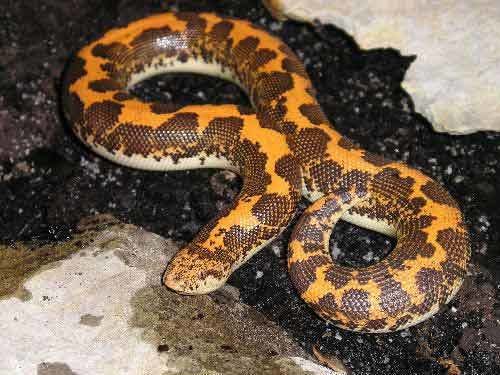 | ||
Similar Old World Sand Boas, Eryx, Gongylophis, Boas, Rosy boa | ||
Gongylophis colubrinus, the Kenyan sand boa, is a boa species found in northern kenya. No subspecies are currently recognized.
Contents
- Description
- Common names
- Geographic range
- Habitat
- Behavior
- Feeding
- Reproduction
- Taxonomy
- Etymology
- References
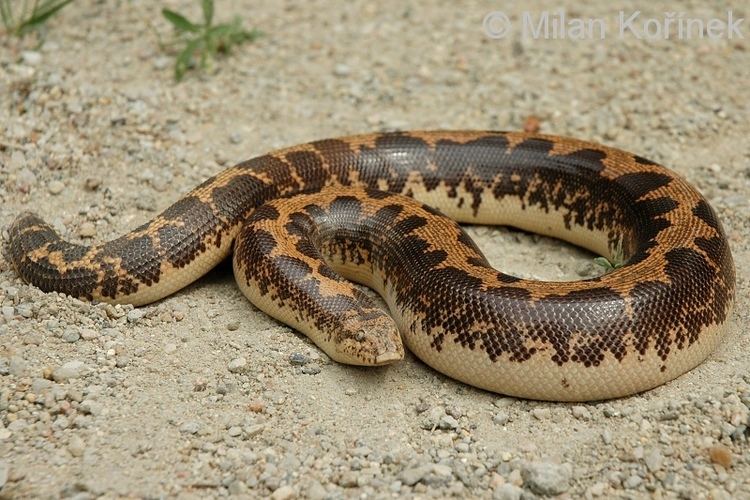
Description
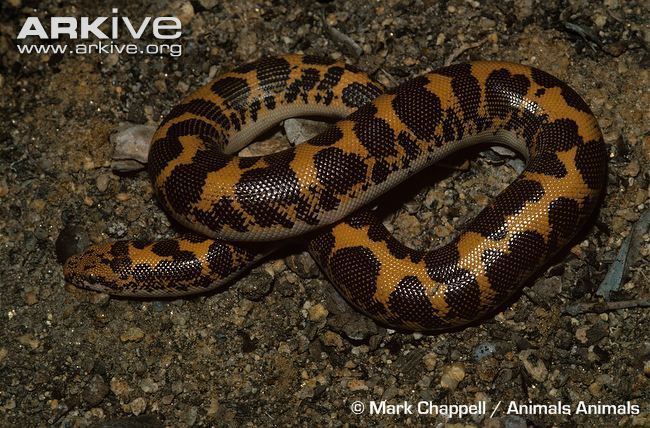
Adult female specimens are rarely more than 91 cm (3 feet) in length. These snakes are heavily built with small heads, small eyes, and short tails. The color pattern may consist of a yellow or orange coloration overlaid with dark brown splotches. The belly is white or cream colored.They are readily available in the pet trade due to their small size, docility and ease of care. In recent years there have been a number of new morphs made available by both commercial and hobby breeders. Some of the more popular morphs available include anerythristic Kenyan sand boas (black and white lacking orange/red simple recessive trait), albino Kenyan sand boas (lacking black pigment simple recessive), snow KSBs (double recessive combination of an anery and albino), stripes (normal colored, anerythristic, albino and snow), hypo/ghost, anerythristic KSBs, paradox albinos (simple recessive), paradox snows (double recessive trait), splash (recessive), paint (recessive) and stripe combinations with any of the listed recessive traits. In addition many line bred traits have been accentuated on the above morphs, such as Nuclears (extreme red), High Whites, Reduced Patterns as examples.
Common names
Egyptian sand boa, Kenyan sand boa, East African sand boa, sand boa.
Geographic range
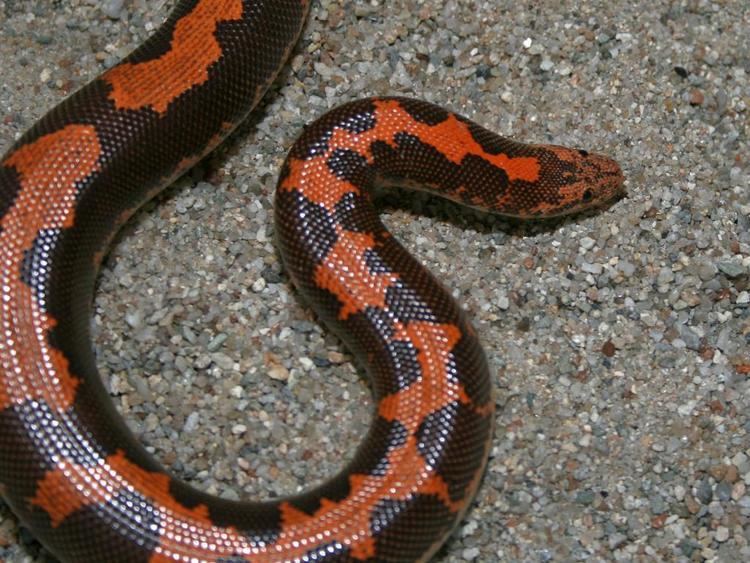
Found in northern Africa from Egypt as far west as Niger (Aïr), including Somalia, Ethiopia, Sudan, Kenya, and northern Tanzania. A single specimen has been reported from Yemen. The type locality given is "Ægypto"
Habitat
Occurs in semi-desert and scrub savannahs and rock outcroppings. Prefers sandy, friable soil.
Behavior
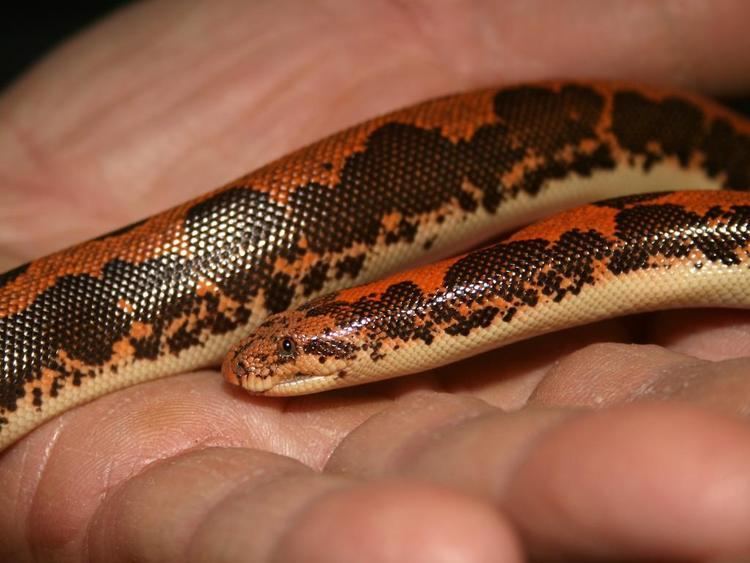
During the hotter times of the year, they seek refuge beneath stones and in the burrows of small mammals.
Feeding
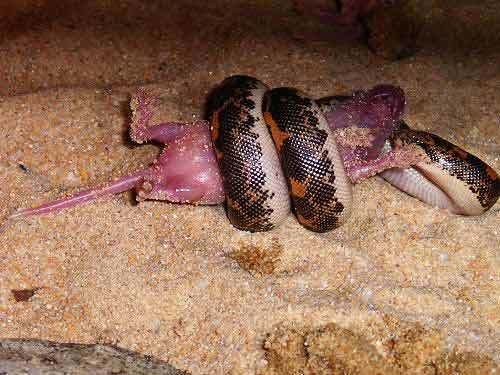
These snakes spend most of their time in shallow burrows with only their head exposed. They feed on small mammals that are quickly seized when passing within striking range and killed by constriction.
Reproduction
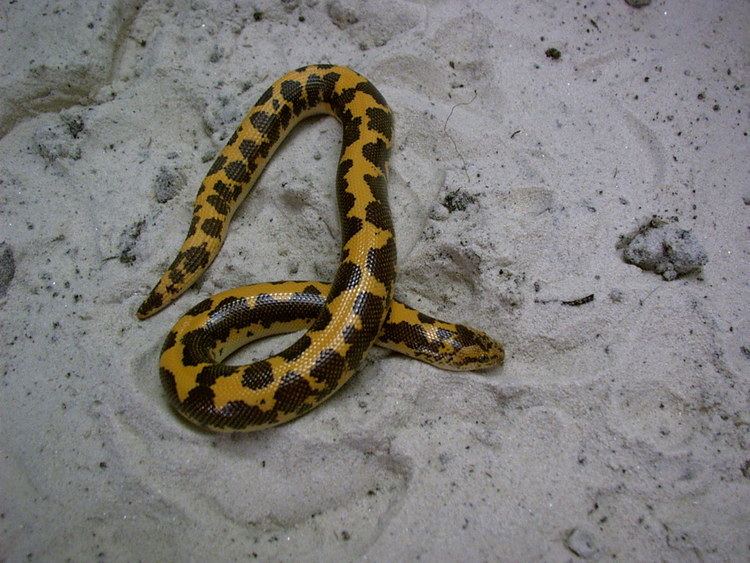
Viviparous, they breed readily November through April in the United States delivering live birth averaging 10-20 babies born spring through late summer. The young at birth typically are 20–25 cm (8-10 inches) in length.
Taxonomy
A synonym for this species is Anguis colubrina, given by Linnaeus.
Stimson (1969) recognized two subspecies: Eryx colubrinus colubrinus Linnaeus, and E. c. loveridgei Stull, but mentioned that a number of other authors, including Ahl (1933), Loveridge (1936), Scortecci (1939), and Parker (1949), questioned whether E. c. loveridgei was valid and considered the species to be monotypic with geographic variation.
When recognized, Gongylophis colubrinus loveridgei is said to occur in the southern part of the range and is described as being more orange in color.
Etymology
The subspecific name, loveridgei, is in honor of British herpetologist Arthur Loveridge.
